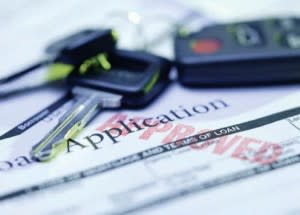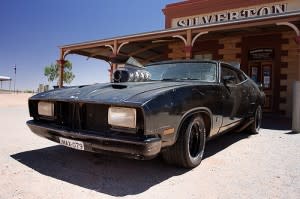Costs to Consider When Buying a Used Car
Today, buying a new car in Singapore is as tough as trying to get into Pangaea Lounge dressed like Jeff “The Dude” Lebowski while trying to pay for entry by cheque. Unless you have the means to pay that 50% – 60% Loan-to-Value (LTV) “cover charge” to join Singapore’s “club” of new car drivers, the only rubber you’ll be burning is from your pair of Doc Martens.
But wait, there is a way you can join the club. Call it a side entrance for those determined enough to get in, called the used car. It doesn’t matter whether you need a car to get to work, drop off the kids, or boost your chances of getting a girlfriend – there’s probably a used car out there that meets your needs and budget.
What’s Factored into a Used Car Loan?
A little due diligence will save you from a bad used car loan deal.
With the value of Certificates of Entitlement (COE) and vehicle Open Market Values (OMV) growing faster than Eduardo Saverin’s entourage at Pangaea, buying a used car can cost up to 50% less than a new car.
Aside from being cheaper, you can get behind the wheel much faster with a used car. How fast? You could be driving down PIE in less than a week compared to waiting months for a new car. Read Ryan Ong’s article “Used Cars in Singapore: Why They’re Worth Buying” to see some of the benefits used cars offer.
Here’s what you must factor when you take out a used car loan:
Loan Restrictions
MAS restrictions had this affect on many car buyers.
In my previous article about buying a new car, you can see why I compare MAS’ latest loan restrictions to a boa constrictor around your neck.
Used car buyers did have a temporary 60-day reprieve from the MAS measures earlier this year, but it wasn’t extended.*
This means you’ll have to deal with the following loan restrictions:
All used car loan tenures are capped at 5 years
If your vehicle’s Open Market Value (OMV) is $20,000 or less, your maximum Loan-to-Value (LTV) is 60% of the purchase price
If your vehicle’s Open Market Value (OMV) is more than $20,000, your maximum Loan-to-Value (LTV) is 50% of the purchase price
With the latest MAS measures, banks have been raising their interest rates to recoup their profit losses from the reduction in loan tenures from 10 to 5 years. So if you’re looking to buy a used car with the best interest rate possible, do your homework first and check out sites like SmartLoans.sg.
*Note: The Singapore Vehicle Traders Association (SVTA) is still trying to appeal the extension of the MAS loan restrictions to used car sales. They’re currently lobbying to raise the Loan-to-Value (LTV) limit to 80% and loan tenures to 8 years.
Depreciation
According to MAS, new cars will depreciate 10% in value annually.
Vehicle depreciation is how much “value” your car loses over a 10-year period through daily use. After that 10-year period, the only value remaining would be the “scrap” value of your vehicle.
To simplify things for car owners/buyers, MAS adopted the straight-line depreciation method of calculating the OMV of vehicles. With this method, your car loses 10% of its value annually.
Let’s use an example so you can compute the OMV of a vehicle for yourself:
Let’s say the original OMV of a BMW was registered on 1 December 2009 was $40,000. The owner then decided to put it up for sale on 31 August 2013.
That means the owner drove it for 47 months, leaving the car with 73 “unused” months remaining.
120 months (12 months X 10 years) – 47 months already used = 73 months
The original OMV of the BMW was $40,000, so divide this amount by 120 months and multiply it by the 73 months of usability remaining.
$40,000 / 120 months X 73 months = $24,333.33 OMV
So if you buy the car, you’ll only get a used car loan with an LTV limit of 50% because the BMW’s OMV is over $20,000.
But if the same model had 60 months remaining, its depreciated value would be exactly $20,000, meaning you could get it with a used car loan with an LTV limit of 60%.
Choosing a PARF or COE Car
Used car dealers will have a good mix of COE and PARF cars.
Ever wonder why some used cars are vastly cheaper than others? Yes, the OMV and condition issues such as dents, engine problems, unidentified stains on the backseat, and an interior that smells like a nightclub bathroom will affect the resale value.
But so will the Preferential Additional Registration Fee (PARF) and the Certificate of Entitlement (COE) Rebates, which are also factored into the car’s resale value.
Here’s the difference between the two:
A PARF car hasn’t been de-registered before its 10-year depreciation period has ended. This makes it eligible for both the COE and PARF Rebate, which is ranges from 50% – 75% of the Additional Registration Fee (ARF) paid on the vehicle.
A COE car is not eligible for the PARF Rebate because the owner chose to pay the Prevailing Quota Premium (PQP) for 5 or 10 more years more instead of de-registering the vehicle. This means that upon de-registration, you’ll only receive the COE Rebate.
You can find out more about how much you can receive for your PARF/COE rebate here.
Outstanding Loan
If the PARF or COE car you’re purchasing has a loan attached, it means that the resale value will include the car’s outstanding loan amount. If that’s the case, you have two options:
You can pay the seller directly the sale price minus the loan amount (Ex. $60,000 sale price – $35,000 outstanding loan = $25,000 up front). You can then take over the monthly loan repayments once the seller transfers the outstanding loan over to you.
You can pay the sales price with the outstanding loan amount in full if you’ve got the means.
No matter which option you take, just keep the “Rule of 78” in mind so you don’t overpay the outstanding loan portion of the sale.
The Rule of 78
It’s a good idea to run the numbers before you say yes to a sale amount.
The banks use the “Rule of 78” whenever a borrower wants to either fully repay or sell his/her car. This means that he/she would only need to pay back the remaining loan balance and an interest rebate penalty (percentage determined by the bank based on the Rule of 78 formula).
Here’s an example:
Total Interest Payable: $40,000 (Car Loan) X 2.88% (Interest Rate) X 5 years = $5,760
Monthly Payments: $40,000 + $5,760 / 60 months = $762.66
Loan Amount Already Paid: 25 (Monthly Repayments Made) X $762.66 = $19,067
Interest Rebate (Rule of 78): [35 Remaining Loan Repayments (35 +1)] / [60 Total Monthly Repayments (60 + 1)] X $5,760 (Total Interest Payable) = $1,983
Interest Rebate Penalty: 20% (Example Penalty) X $1,983 = $396.60
Total Loan Redemption Amount: $40,000 (Car Loan Amount) + $5,760 (Total Interest Payable – $19,067 (Loan Amount Already Paid) – $1,983 (Total Interest Payable) + $396.60 (Interest Rebate Penalty) = $25, 106.60
So before you blindly pay off the seller’s loan, factor in the Rule of 78 so you don’t overpay on the car loan’s interest.
Transfer Fee
With the new transfer fee, you’ll get to keep more of your money (for once!).
When you buy a used car, you’ll have to pay a fee so you can register the vehicle in your name. Thankfully, this fee is less than the cost to take your girlfriend to the local hawker centre for chicken rice – at only $11.
But there is an additional levy that must be paid if the car you’re buying is transferred to you between the 4th and 6th months after de-registration.
To check the transfer fee of your future vehicle, click here.
The Road Tax
Size matters when it comes to the size of your… engine in determining the Road Tax Surcharge.
Although this isn’t a factor in your used car loan, it’s definitely something all used car owners should know. It’s an additional tax that’s calculated based on the engine size of your car – the larger the engine, the larger the fee.
If you buy a used car that’s more than 10 years old (COE Car), you’ll have to pay an additional road tax surcharge on top of the standard road tax.
Here’s the surcharge you’ll have to pay annually:
Additional 10% of the Road Tax if your car is 10 years old
Additional 20% of the Road Tax if your car is 11 years old
Additional 30% of the Road Tax if your car is 12 years old
Additional 40% of the Road Tax if your car is 13 years old
Additional 50% of the Road Tax if your car is 14+ years old
Now that you’ve got a better idea of what goes into a used car loan, you can get a better idea of what you’ll be paying to get on the road. But if you still need help finding the right used car loan, you can visit SmartLoans.sg for more information.
What kind of car are you looking to buy? Share your thoughts with us on Facebook!
Image Credits:
RoySmiths, amerikas bjas, ccdoh1, mickeyjohnson, Lawyers.com, Aerial Photography, Rascaille Rabbit, FunkyFreaks Classifieds
Get more Personal Finance tips and tricks on www.MoneySmart.sg
Click to Compare Singapore Home Loans, Car Insurance and Credit Cards on our other sites.
More From MoneySmart

 Yahoo Finance
Yahoo Finance 






